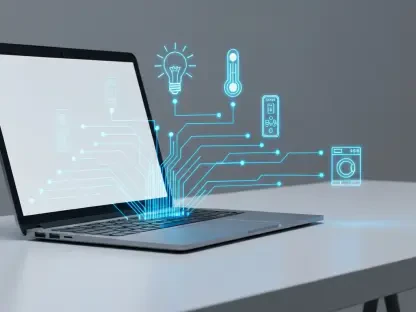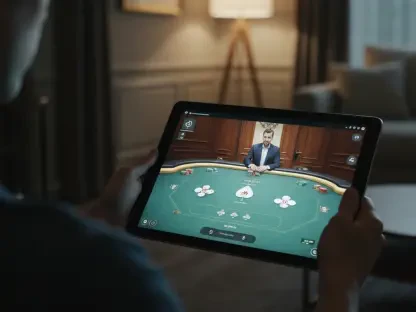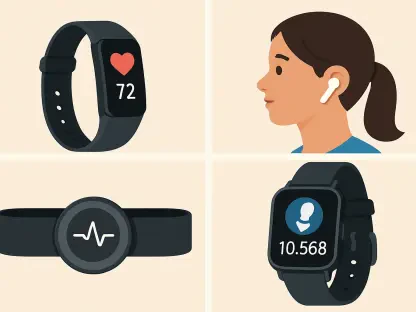In a much-anticipated announcement made at the Worldwide Developers Conference (WWDC), Apple introduced iOS 26, marking a significant leap forward in design innovation within the technology industry. The major highlight of this update, Liquid Glass, is a design marvel that aims to redefine user experience across Apple’s extensive range of products, including macOS, tvOS, watchOS, and iPadOS. By focusing on integrating the aesthetic appeal of reflective glass with a responsive, fluid-like behavior, Liquid Glass promises to revolutionize how users engage with their devices. This new design intends to adapt dynamically to its environment, altering its appearance based on the surrounding visual content and lighting, providing an immersive experience that reacts in real-time.
The Liquid Glass Revolution
Design Overhaul and User Experience
Liquid Glass stands as a testament to Apple’s relentless pursuit of blending technology with artistry. The redesign encompasses both aesthetic and functional elements, creating an engaging, fluid interaction experience that responds to user inputs and environmental factors. This material, resembling high-quality optics, refracts light, giving apps and interfaces a new dimension of depth and movement. The innovation does not just stop at aesthetics; the dynamic nature of Liquid Glass allows for more interactive multitasking and improved accessibility features, ensuring that even traditionally mundane tasks manifest as engaging, intuitive experiences. This cutting-edge design aims to encourage fluidity in operations, making interactions seamless and enjoyable, further enhancing productivity.
Addressing Concerns with iOS 18
The latest updates come as a response to a variety of user criticisms directed at previous versions, particularly iOS 18, which faced backlash over its limiting photo application functionalities. With its sophisticated use of AI, Liquid Glass introduces spatial depth enhancement, enabling users to transform conventional photos into enriched visuals without needing any additional software. The design overhaul also features intuitive navigation settings, optimizing the Photos app by adding features that handle image collections in a more user-friendly way. This includes new functions for collapsing sections and conveniently organizing digital media, addressing previous complaints about usability. By doing so, Apple aims to offer tailored user experiences that align with the evolving demands and preferences of its tech-savvy customers.
Apple’s Vision for Integration
Hardware and Software Convergence
Alan Dye, Apple’s vice president of user interface design, emphasized this update’s significance, describing the seamless integration between hardware and software as a milestone in Apple’s design journey. By engaging in a comprehensive revision across all platforms, Apple aims to create a unified experience where every interaction feels synchronized. The Liquid Glass interface is designed to utilize device hardware optimally, initiating synergy that enhances processing efficiency while maintaining aesthetic appeal. This convergence presents an ecosystem where devices communicate and operate in a cohesive manner, revealing Apple’s forward-thinking strategy to synergize its products.
Enriching Simple Tasks
Through these enhancements, Apple endeavors to make even the simplest interactions a delight, transforming generic routines into satisfying user experiences. Whether it’s sending a message or browsing through an app, the Liquid Glass design ensures these activities are not just functional but also visually captivating. By integrating advanced technologies that enable real-time responses to user gestures and external conditions, the update seeks to deliver an all-encompassing experience. This refinement goes beyond improving the look of the interface; it fundamentally shifts how users perceive and interact with technology, turning ordinary tasks into meaningful and enjoyable actions.
Looking Ahead
Innovative Momentum and Future Directions
With the introduction of Liquid Glass, Apple has set a new standard in the tech industry, making a clear statement about its commitment to innovation. This monumental shift is observed not only in terms of design and aesthetics but also in functionality, setting a precedent for future updates and advancements. As Liquid Glass becomes accessible to the public this fall, the company anticipates a tremendous wave of feedback and user interaction on various social platforms, providing insights into the technology’s reception. This dialogue is expected to drive new ideas and improvements, further shaping the trajectory of future Apple products.
Bridging Technology and Human Experiences
At the highly anticipated Worldwide Developers Conference (WWDC), Apple unveiled iOS 26, representing a major advancement in design innovation within the tech industry. A standout feature of this update, Liquid Glass, is a design breakthrough intended to transform user experiences across Apple’s vast lineup of products, encompassing macOS, tvOS, watchOS, and iPadOS. Liquid Glass focuses on merging the elegance of reflective glass with dynamic, fluid-like interaction, promising to revolutionize user-device interactions. Its most intriguing aspect is its ability to dynamically adapt to its surroundings, modifying its visual presentation in response to the environmental setting and lighting conditions. This feature offers users an immersive experience with real-time reactions, enhancing the way users interact with their devices. This advancement marks another step in Apple’s legacy of combining aesthetic appeal with innovative technology, ensuring that their products remain at the forefront of user experience design.









